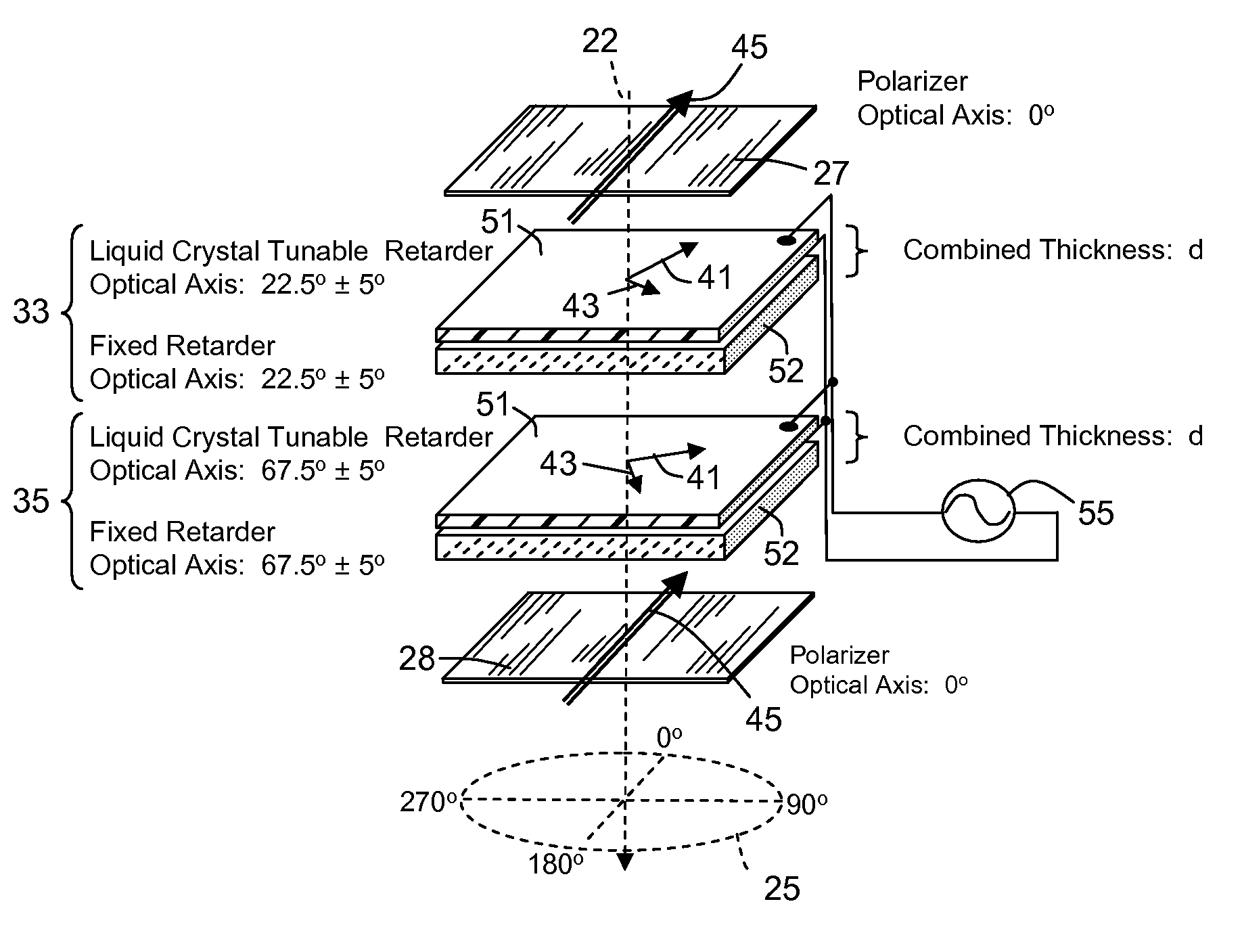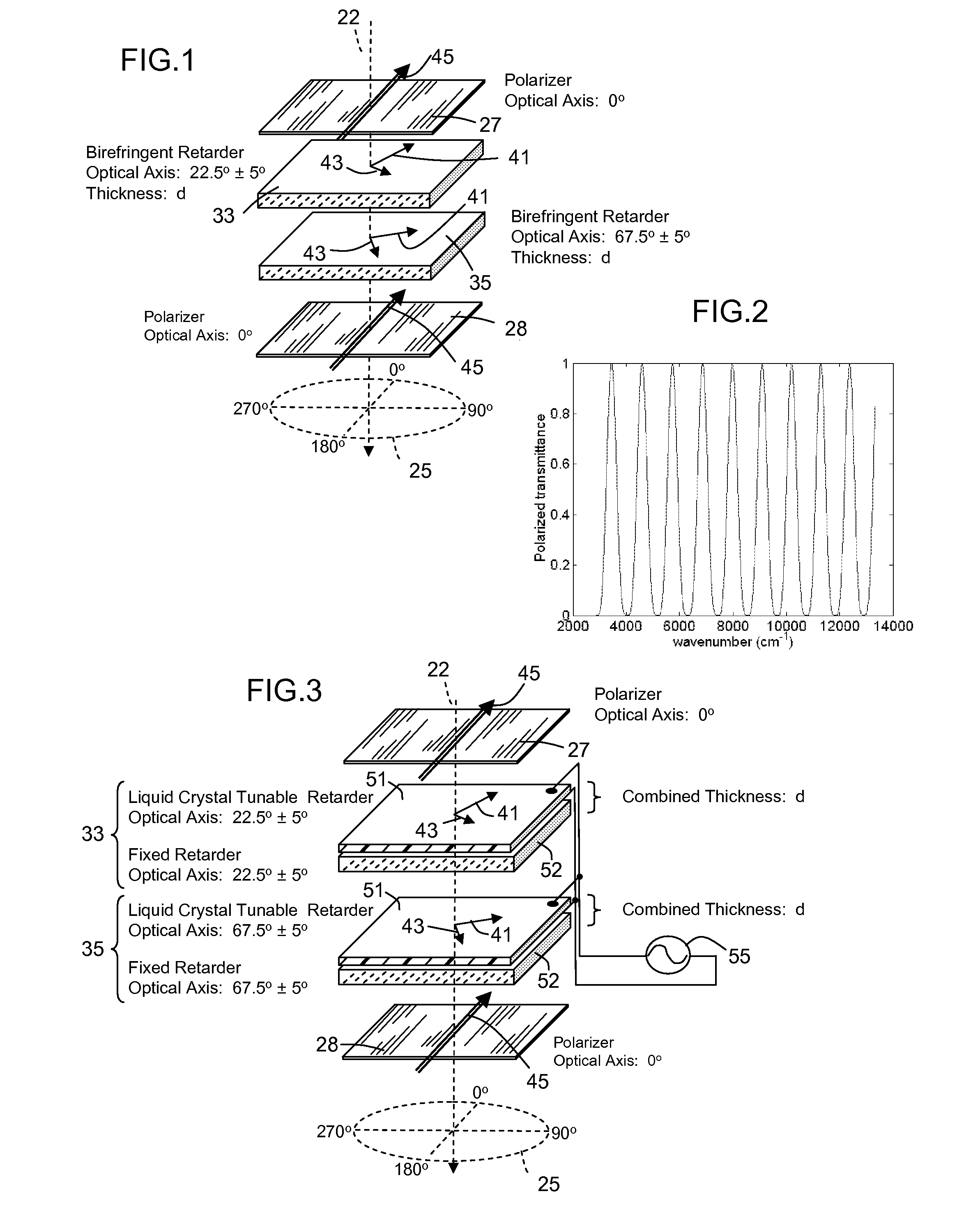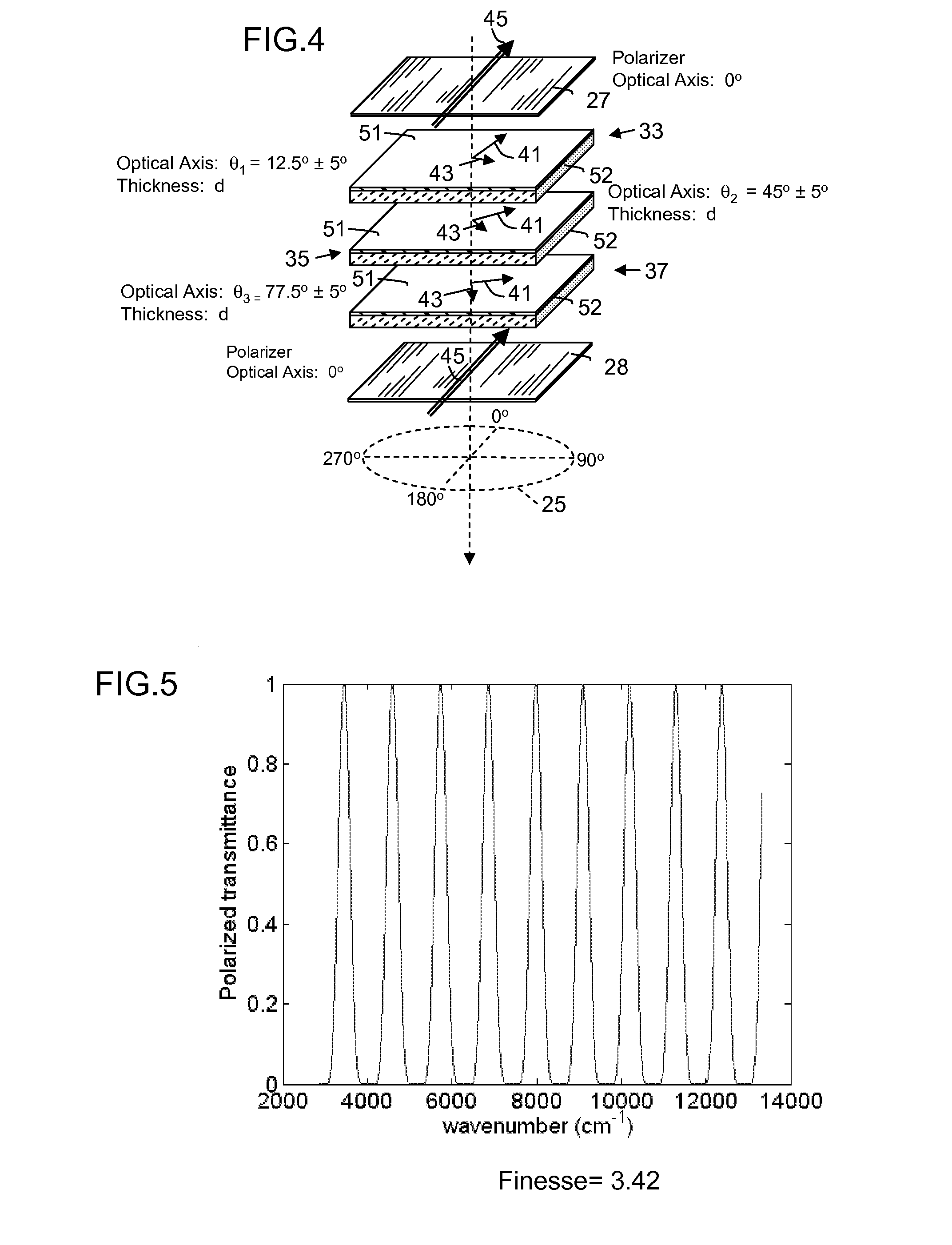Wavelength discrimination filter for infrared wavelengths
a wavelength discrimination filter and infrared technology, applied in the field of optical interference filters, can solve the problems of high rejection ratio between wavelengths that are transmitted versus absorbed or reflected, many layers of material, and many layers of material
- Summary
- Abstract
- Description
- Claims
- Application Information
AI Technical Summary
Benefits of technology
Problems solved by technology
Method used
Image
Examples
Embodiment Construction
[0050]A spectral filter uses a succession of birefringent elements to establish and to interfere at a selection polarizer vector components of a light input signal. The light input signal is processed through a succession of birefringent elements that are rotationally displaced. The birefringent elements adjust the polarization state of the light as a function of wavelength. More specifically, the birefringent elements produce phase displacement of vector components comprising a change in polarization state. A comb filter succession of spectral bands assume a polarization state that is transmitted by a selection polarizer at an output of the filter. The transmitted band or bands are termed the discrimination band(s).
[0051]This type of filter that relies on birefringence and polarization is generally known as an birefringent interference filter, and there are a number of known configurations of such filters that establish a polarizations states as a function of wavelength and then pa...
PUM
 Login to View More
Login to View More Abstract
Description
Claims
Application Information
 Login to View More
Login to View More - R&D
- Intellectual Property
- Life Sciences
- Materials
- Tech Scout
- Unparalleled Data Quality
- Higher Quality Content
- 60% Fewer Hallucinations
Browse by: Latest US Patents, China's latest patents, Technical Efficacy Thesaurus, Application Domain, Technology Topic, Popular Technical Reports.
© 2025 PatSnap. All rights reserved.Legal|Privacy policy|Modern Slavery Act Transparency Statement|Sitemap|About US| Contact US: help@patsnap.com



